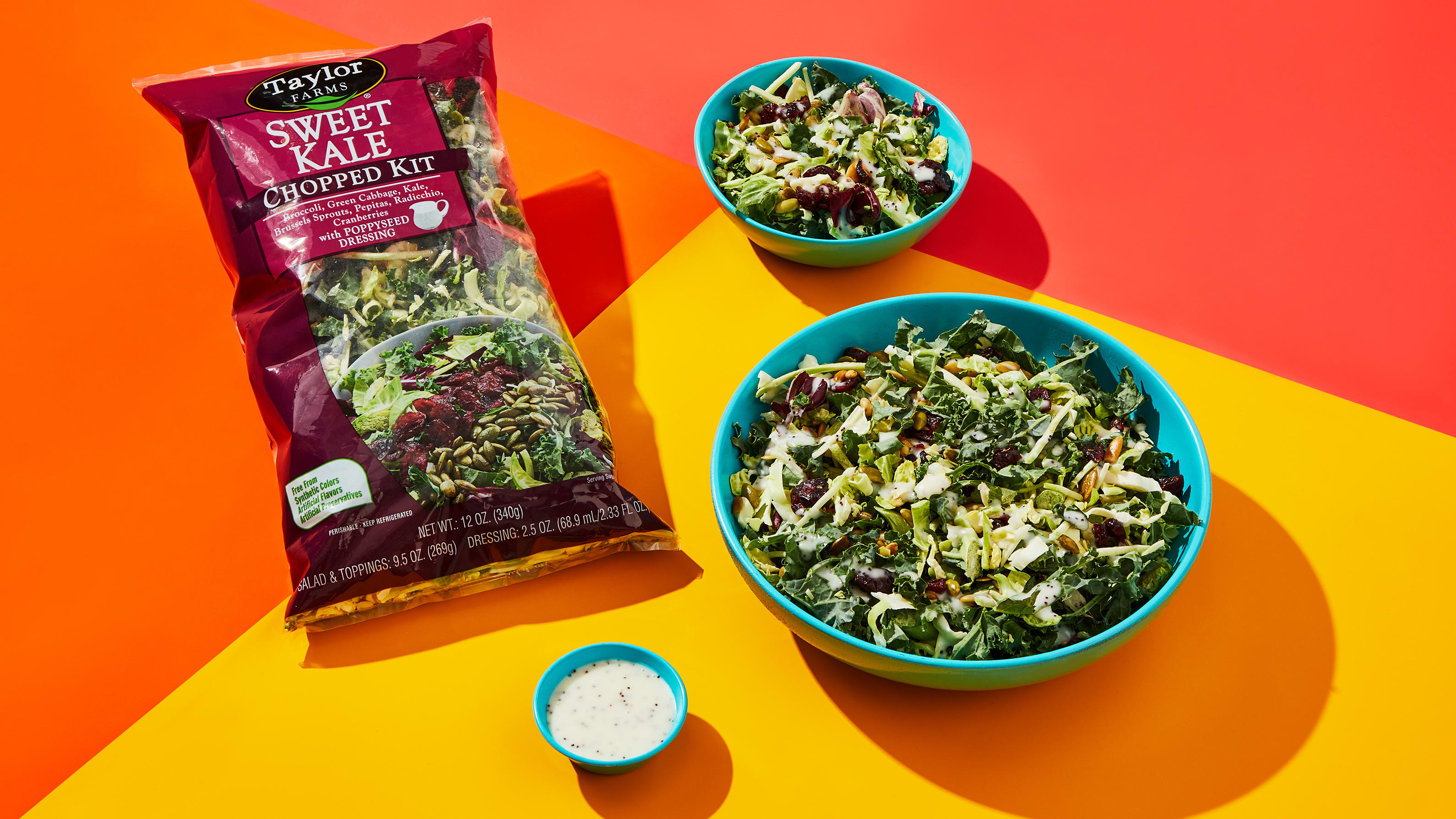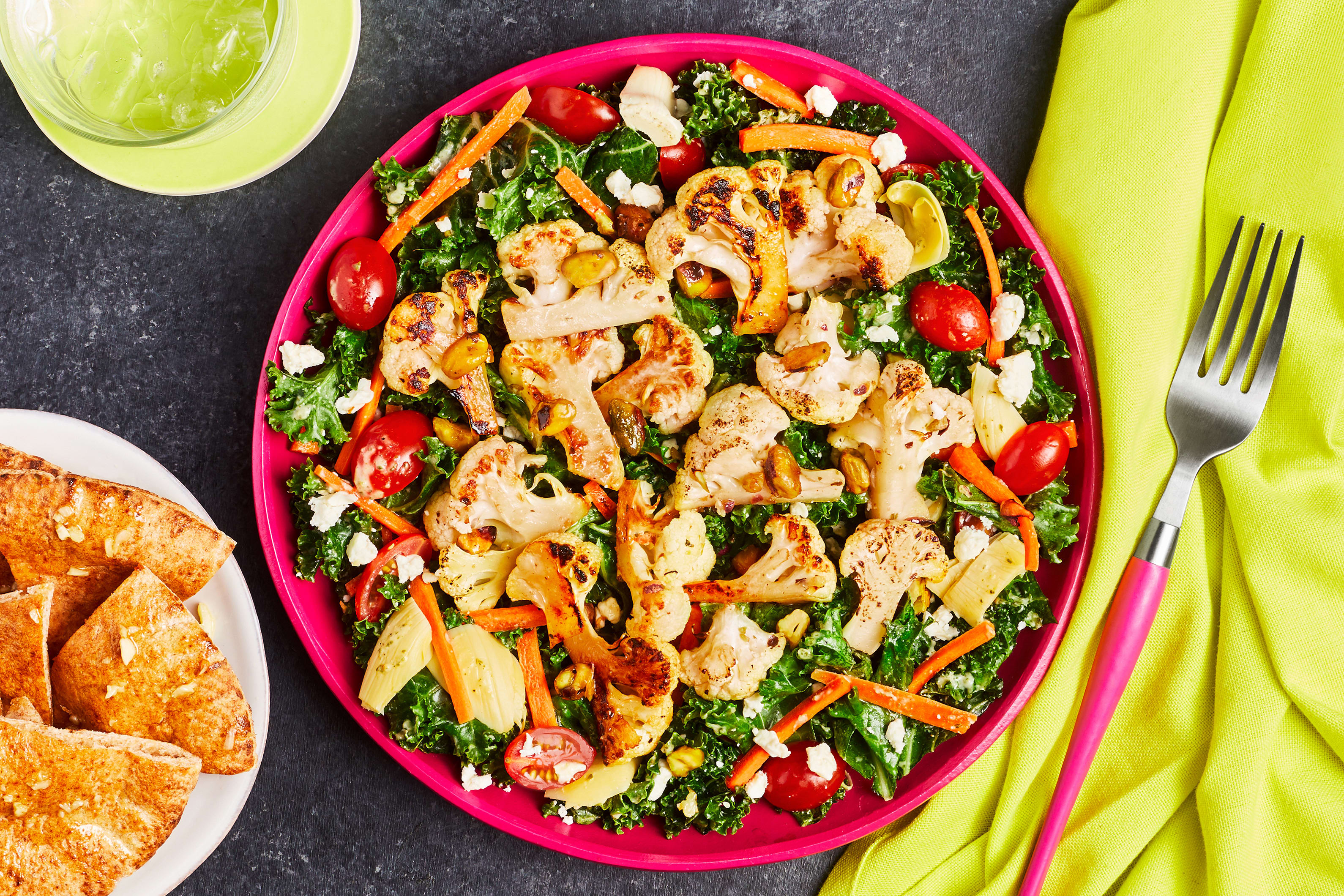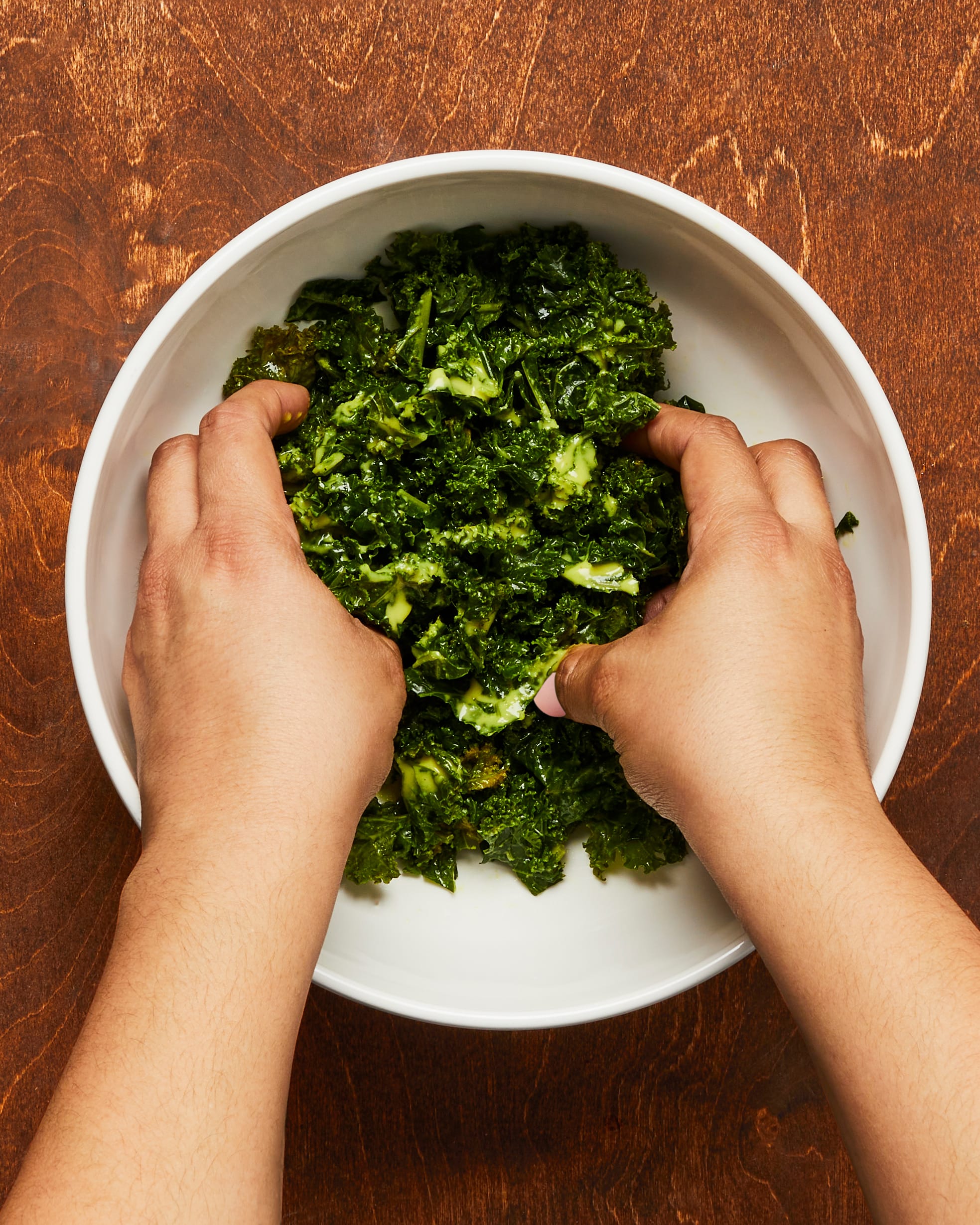How Long Does Kale Last in the Fridge & How To Store
How Long Does Kale Last in the Fridge & How To Store
Kale has become a staple in kitchens everywhere, celebrated not just for its versatility but also for its impressive health benefits. This leafy green has gained a reputation as a superfood, finding its way into a number of dishes that families love.
But, like all fresh produce, a question often arises: "How long does kale last in the fridge, and how do we store it to maximize its freshness?"
At HelloFresh, we're passionate about bringing fresh, nutritious ingredients right to your doorstep, along with the know-how to store them properly. With our focus on high-quality produce, we ensure that every leaf of kale retains its goodness from our kitchen to yours.
What Makes Kale a Superfood?
Kale is more than just a trendy leafy green. It's a powerhouse of nutrition that has earned its title as a superfood for several reasons:
Vitamins galore: Kale is a nutrient-dense food, providing a substantial amount of vitamins A, C, and K. Vitamin A supports overall eye health, vitamin C is known for its role in immune health, and vitamin K is essential for healthy blood clotting.
Mineral-rich: This vegetable is an excellent source of minerals such as calcium, iron, and potassium. Calcium supports bone health, iron is important for healthy blood cells, and potassium is a key mineral for heart function.
Antioxidant properties: Kale includes antioxidants like quercetin and kaempferol, which are known for their wellness-enhancing properties. These substances support the body's ability to manage stress and contribute to overall health.
Fiber-filled: High in dietary fiber, kale aids in digestive health and contributes to a feeling of fullness, which can be beneficial for weight management without compromising on nutritional value.
Low in calories, high in protein: With a low-calorie count and a relatively high protein content for a vegetable, kale fits well into various diets, promoting overall wellness.

How Long Can Kale Last in the Fridge?
When it comes to storing kale in the refrigerator, understanding its shelf life is essential for maintaining both its freshness and nutritional value.
Here’s what you need to know:
Typical shelf life: Generally, kale can last in the fridge for about five to seven days. The key is to store it correctly to maintain its crispness and nutrients.
Impact of temperature and humidity: Kale prefers a cool and slightly humid environment, so the crisper drawer in your fridge is ideal. It provides the right balance of cool air and moisture to keep the kale fresh.
Freshness at purchase: The shelf life of kale also depends on its freshness when you buy it. Choose kale that looks crisp and green without any yellow or brown spots.
Remember, the fresher the kale when you buy it, the longer it will last in your fridge. Storing it properly right after you get home can significantly extend its shelf life, allowing you to enjoy its health benefits for longer.
When Should I Throw Away My Kale?
Identifying when kale has gone bad is crucial to ensure you eat it when it’s most beneficial and safe.
Here’s what to look out for:
Visual cues: Watch for yellowing leaves or those that have turned a brownish color. These are clear signs that your kale is past its prime.
Texture changes: Fresh kale should be crisp. If it feels slimy or overly wilted, it’s time to discard it.
Smell: Kale that’s starting to spoil will have a sour or unpleasant odor. Trust your nose; if it smells off, it’s best not to eat it.
Food safety is important, so if you’re in doubt about the freshness of your kale, it’s better to err on the side of caution and throw it out. Using kale while it’s fresh ensures you get the most out of its nutritional benefits—and it tastes better, too!

How Do I Store Kale?
Ensuring kale stays fresh until you're ready to use it involves a few simple but effective storage techniques.
Here's how to keep your kale vibrant and crisp:
Airtight containers: Store kale in airtight containers to lock in freshness and moisture. This prevents the leaves from drying out and wilting.
Plastic bags and paper towels: Another method is to wrap the kale in paper towels and place it in a plastic bag. The paper towels absorb excess moisture, which can accelerate spoilage.
Avoid washing before storing: Wash kale only when you're ready to use it. Storing it dry helps extend its shelf life in the fridge.

Kale in Your Weekly Diet: Tips and Tricks
Kale has become a hero in our kitchens. It's not just about its health benefits, either. Kale brings a unique flavor and versatility that can jazz up any meal.
Here’s how you can make kale a star in your weekly meal routines:
Mixing up salads: Kale's texture makes it perfect for salads. Try our Cranberry-Apple Kale Salad for a delightful mix of sweet and savory. The key is to massage the kale leaves with a bit of olive oil to soften them, making them more palatable and easier to digest.
Sneaking into smoothies: For those particularly picky eaters, kale can be a secret ingredient in smoothies. Its flavor is easily masked by fruits like bananas or blueberries, making it a sneaky way to add extra nutrients to your family's diet.
Kale chips for snacks: Swap out the potato chips for kale chips—toss them with a little olive oil and your favorite seasonings, and bake until crisp. It’s a snack that’s both satisfying and healthy.
Adding to soups and stews: Kale holds up well in cooking, making it a great addition to soups and stews. It adds a pleasant texture and a boost of nutrients.
Revamping breakfast: Toss some kale into your morning scrambled eggs or layer it in a breakfast casserole. It’s a great way to kickstart your day with a healthy dose of greens.
Creating hearty sides: Sautéed kale with garlic and a squeeze of lemon can be a simple yet flavorful side dish that compliments any main course.
Kale pizzas: Top your pizzas with kale for a nutritious twist. It adds a crunchy texture and pairs well with a variety of toppings.
Pasta dishes: Add kale to pasta dishes for an extra layer of flavor and nutrition. It works well in both creamy and tomato-based sauces.
Meal prepping with kale: Kale’s hardy nature makes it ideal for meal prepping. It doesn’t wilt as quickly as other greens, so you can prepare dishes in advance without worrying about soggy salads.
Innovative recipes: We strive to bring variety and creativity to your meals. We’re always finding new ways to incorporate kale into exciting and easy-to-follow recipes— from hearty salads to warming soups, HelloFresh always has something new to try.
Incorporating kale into your family’s diet doesn’t have to be a chore. With a little creativity and these tips, you can turn this superfood into super-delicious meals that everyone will love.
Reviving Wilted Kale: Is It Possible?
Wilted kale might seem like a lost cause, but don't toss it out just yet! There's a simple trick to bring back some of its crispness and vitality.
Here's how:
Cold water bath: Submerge the wilted kale leaves in a bowl of ice-cold water. This shock of cold can help revive the leaves.
Let it soak: Leave the kale in the water for about 10 to 15 minutes. The leaves will absorb the water and perk up.
Dry thoroughly: After their cold bath, gently dry the leaves. Using a salad spinner or patting them dry with a towel works well.
Immediate use: Once revived, it's best to use the kale as soon as possible, as it won't retain its crispness for long.
This method won't restore the kale to its original state, but it can save it from the compost bin and make it suitable for cooking or blending into smoothies.